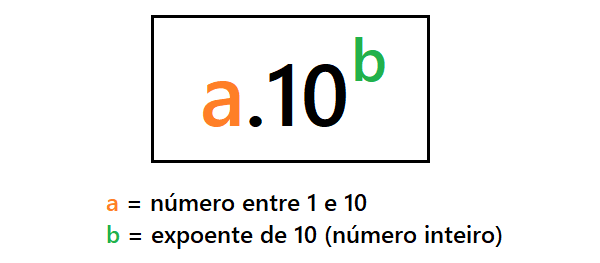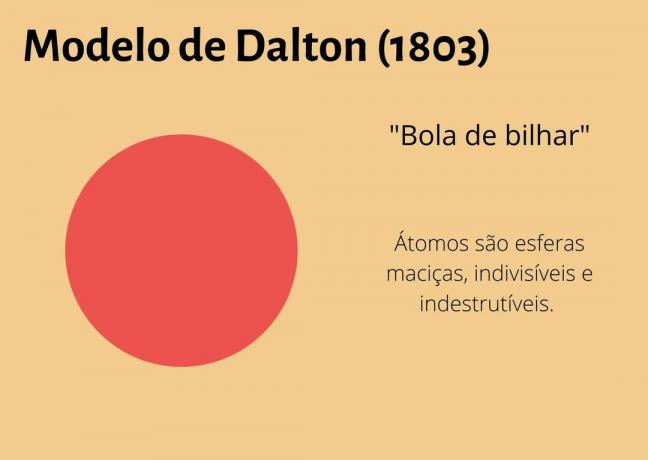The reproduction of living beings is a biological process through which organisms generate offspring, which is vitally important to perpetuate species. Two types of reproduction are recognized: sexual reproduction and asexual reproduction, which in turn are subdivided into other types. Let's look at each one.
asexual reproduction
Asexual reproduction is one in which only one parent is needed to create a descendant organism. In this type of reproduction, an individual fragments, splits or divides, giving rise to one or more individuals with the same genetic load, unless a mutation occurs.
Asexual reproduction can manifest itself in both unicellular and multicellular organisms. It has the particularity of generating identical offspring.
Types of Asexual Reproduction
There are several types of asexual reproduction, such as binary division, parthenogenesis, budding, fragmentation, sporulation and vegetative multiplication.
Binary division, cissiparity or bipartition
An organism duplicates its DNA and from it divides into two identical cells.
For example, bacteria and archaea (bacteria-like prokaryotic organisms).
fragmentation
The organism fragments or breaks apart. From this fragment, another individual with the same characteristics is generated.
For example, corals and starfish.
Budding, gemiparity or budding

The organism generates a bud that, when detaching, gives rise to another organism.
For example, certain yeasts and sponges.
Sporulation
The organism creates spores (reproductive units) from which a new organism forms.
For example, fungi.
Parthenogenesis
It is produced from unfertilized female sex cells that give rise to another life. Despite the intervention of a female sex cell, parthenogenesis is considered asexual because it is generated from a single parental individual.
For example, bees and certain types of insects.
Vegetative multiplication or vegetative propagation
It consists in the formation of new organisms from one part of another, such as plants, tubers and rhizomes.
For example, potatoes.
sexual reproduction
Sexual reproduction is one that requires two parents, a female and a male. The offspring obtained is similar (not identical).
Through a cell reproduction process called meiosis, each parent generates gametes (female and male), which carry half of the genetic material that makes up a somatic cell.
When the gametes come into contact, fertilization takes place, the result of which is the creation of a zygote. The zygote (or egg cell) is the cell from which a new living being is generated.
For the gametes to come into contact, a fertilization process is necessary. Fertilization can take place in three different ways: internal, external and autogamy.
See too: Definition of Zygote.
Internal fertilization
Through mating, the gametes fertilize and develop inside the female. Note: the Hippocampus kuda, a species of fish known as the seahorse, is an exception to this rule as it is the only male capable of becoming pregnant.
For example, live-bearing animals, including lions, zebras, monkeys and humans.
external fertilization
The parents release sex cells into the environment, where fertilization takes place. It is common in the aquatic environment.
For example, vertebrate fish, crustaceans and most of the algae, all belonging to the ovuliparous group.
Autogamy
Proprietary of organisms that contain female and male sex organs (hermaphrodites). These organisms can fertilize by themselves under specific conditions.
For example, some species of flowers, among which roses and wheat flower stand out.
Types of sexual reproduction
Sexual reproduction can be classified according to the morphological characteristics of gametes.
isogamy
This name comes from the Greek terms iso, which means "equal", and deer, which means "marriage" ("marriage"). It corresponds to those species in which the gametes of each parent are equal in size and shape. Thus, one cannot distinguish between female and male.
For example, the reproduction of some classes of fungi.
anisogamy
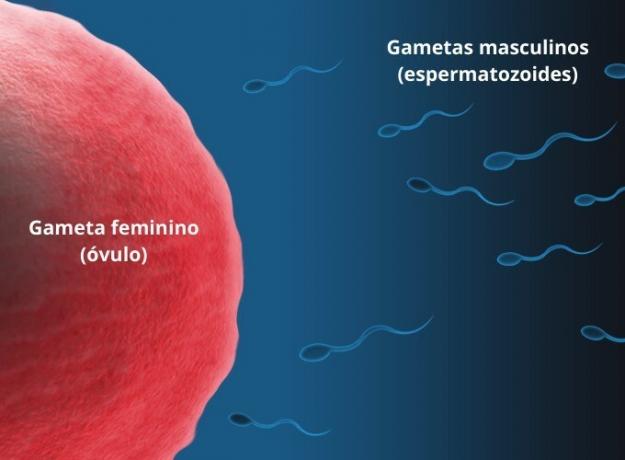
Its name derives from the Greek terms an, which means "denial" or "lack", iso, which means "equal", and deer, which means "marriage". It corresponds to those species in which the gametes of each parent differ in their shape and dimensions. This is the case of sperm and eggs.
For example, most mammals, such as cats, dogs and horses.
Sexual reproduction in animals
The modalities or forms of sexual reproduction in animals include the viviparous, ovoviparous, oviparous and ovuliparous animals.
Viviparous

In viviparous animals, fertilization and embryo development take place within the female. All viviparous animals have internal fertilization.
For example, most mammals (with the exception of platypus and echidnas). Human reproduction follows this pattern.
See too: Meaning and Types of Fertilization.
oviparous
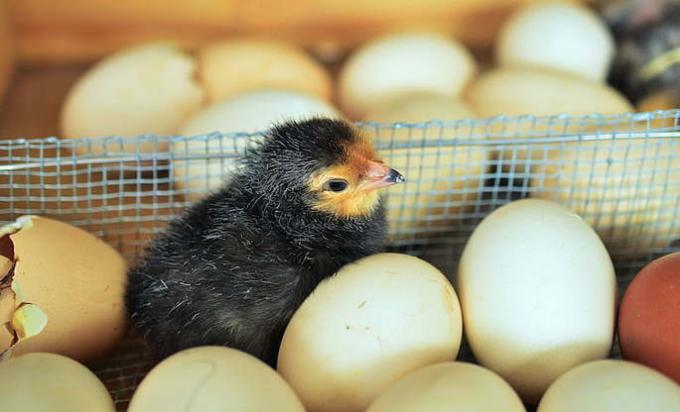
Oviparous animals are those whose females lay eggs. Embryo development takes place inside the egg. Females are fertilized by the male before spawning.
For example, birds and most reptiles.
ovuliparous
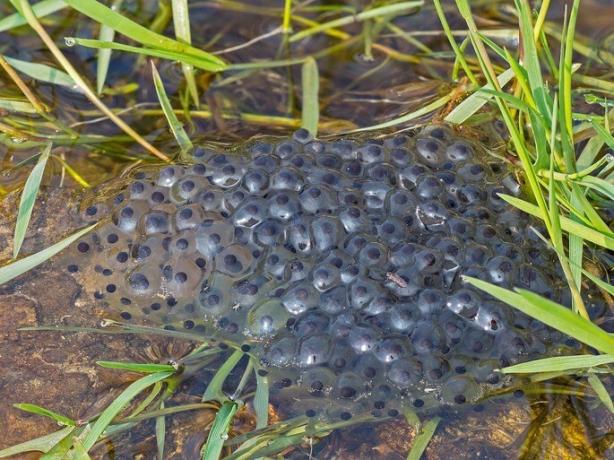
Ovuliparity is a variant of oviparity. It applies to animals whose egg fertilization occurs after spawning. So it's about external fertilization. It can be seen in aquatic species.
For example, most fish, some crustaceans and certain amphibians such as frogs.
ovoviparous
In ovoviparous animals, fertilization and egg development take place within the female, so that the new organism is ready to hatch after spawning.
For example, the asp viper and sharks.
Sexual reproduction in plants
Plants reproduce through a process called pollination, be it anemophilous (induced by wind), hydrophilic (induced by water) or zoophilic (induced by animals).
Two basic types of sexual reproduction in plants are known: reproduction in angiosperms (flowers) and in gymnosperms (seeds without flowers).
Sexual reproduction in angiosperms
Angiosperms are flowering plants in which the reproductive organs of the species are found.
For example, orange trees, coffee trees and apple trees.
Sexual reproduction in gymnosperms
Gymnosperms are flowerless plants called conifers. These plants contain cones or cones that carry the seeds.
For example, pine trees and cedars.
See too:
Definition of Embryonic Development

